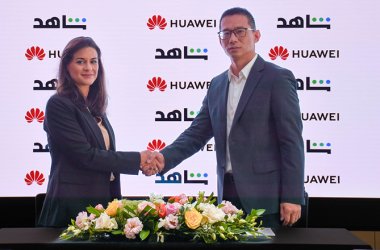Following the unveiling of the IDEOS smart devices, Chinese vendor Huawei has revealed that it?s eyeing the Middle East distribution channel to grow its retail and channel presence in the Middle East mobile and smartphone market.
The vendor which already has IMS as its UAE distributor, states that the move to launch smartphone devices including the IDEOS S7 Slim tablet is borne out of Huawei’s long ambition to bring to the Middle East region smart devices that are not targeted at the entry to mid-market.

Dai Shengwei, president ofHuawei Device Business Middle East, says: “Our smart device development is underpinned by a philosophy of ‘smart device, simple world’”. This means, says Shengwei that Huawei focuses on ensuring its technology enhances and make peoples’ lives easier through intuitive design and easy access to feature rich applications.
He explains that although Huawei as a brand is well known for its telecoms equipment business, the company has a value proposition both from a product and price perspective in the smart devices market.
Shengwei says the move to focus on building a successful distribution business in the Middle East region is to ensure that the power retailers, channel partners and end-users are properly supported. “These products will go 100% through a two-tier channel and we are looking forward to growing the Huawei brand in the smartphone and device space in the Middle East,” he says.
In addition says Shengwei, appointing in-country distributors will ensure that the company is able to meet the demands of the market. “If you look at the tablet or smartphone device market, it’s dominated by one or two key players who have kept their products at the top,” he says. “With Huawei coming into the smart device market with smartphones and a tablet array, we are opening up the smart devices market in the region.”
Shengwei explains that the company is excited about launching its suite of smart devices in the Middle East which is experiencing such rapid growth. “Last year, we managed to sell just over one million units of smart devices in the whole of the Middle East region,” he remarks. “This year with the increased array of products and the growing brand awareness, our target is to at least get closer to three million units.
Shengwei adds that Huawei is aiming to be in the top five vendor bracket for smart devices in the Middle East and move into the top three in the next two to three years. “It will be challenging for us given that our strength has traditionally been in the service provider market globally,” he says. “We believe we have what it takes to be a force to be reckoned with and we are hoping to replicate similar success we have enjoyed with the service provider in the Middle East with our smart devices business.”
The smart devices that Huawei has unveiled in the Middle East consumer market include the IDEOS X5 smartphone, IDEOS smartphone, U8300, U8500 smartphone and IDEOS S7 Slim tablet.
Shengwei adds that because the smart devices are based on Android 2.2 operating system, the company is delighted with the acceptance that the Android platform has received in the Middle East. “There is no doubt that as we introduce new products in the second half of this year, our brand awareness will grow in this market,” he says.
Huawei Middle East has been upping its tempo in the Middle East from the onset of 2011 as the Chinese headquartered vendor recently launched its Enterprise business unit in the Middle East. The move was followed and complemented by Huawei’s announcement of the official formation of its Enterprise Partner Programme at the beginning of March. Since then, the company has been pro-actively engaging with channel partners all in an effort to raise its channel game.





